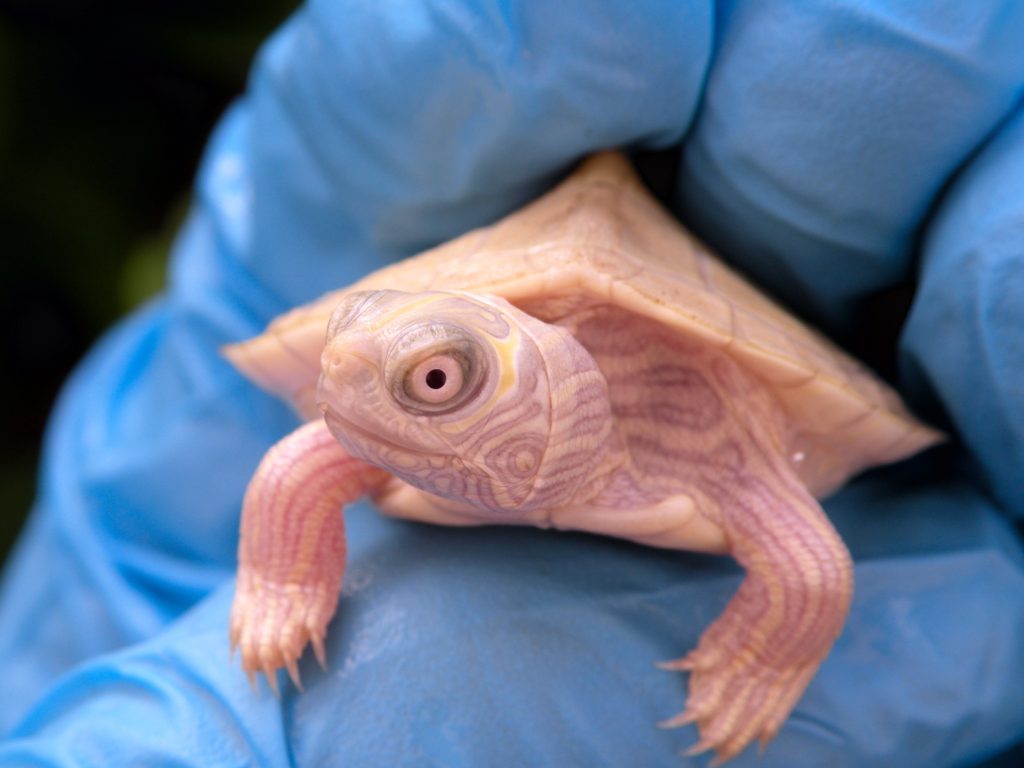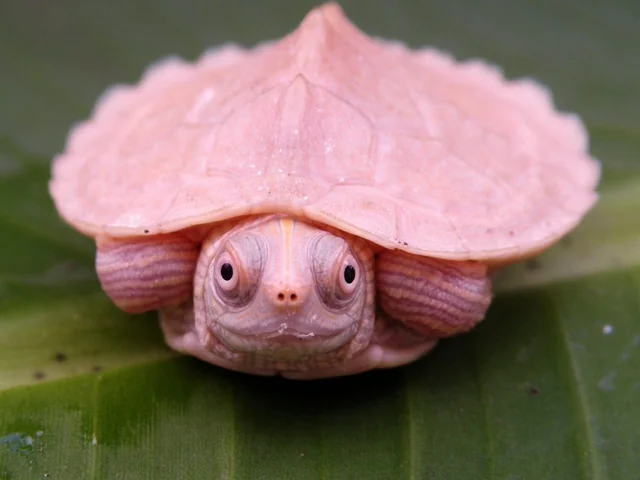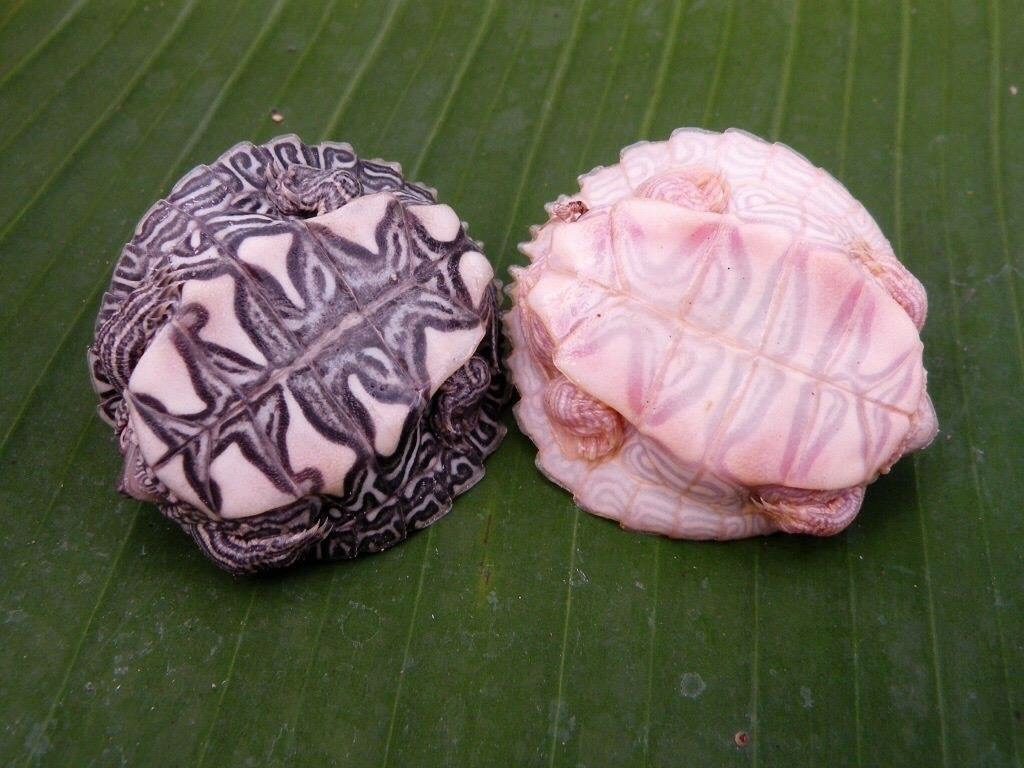Discover the White Mississippi Map Turtle – A Stunning Masterpiece of Nature

Discover the White Mississippi Map Turtle – A Stunning Masterpiece of Nature
Have you ever encountered a creature that seems like it’s been painted by the hand of nature itself? Meet the White Mississippi Map Turtle, one of the most breathtaking and enigmatic species of freshwater turtles found in the United States. These turtles are not your ordinary reptile – they are an extraordinary testament to the wonders of natural variation. Let’s dive deep into the world of this rare and captivating species!
What Makes the White Mississippi Map Turtle So Unique?
Unlike most other turtles, the White Mississippi Map Turtle boasts a super hypo color variation, which is truly mesmerizing. What does “super hypo” mean? It refers to a significant reduction in pigmentation in both their skin and shell. The result is a turtle whose appearance is a soft, pale shade that contrasts beautifully with the intricate map-like patterns on their shell.
But there’s a twist: while the white coloration might remind you of an albino turtle, it’s not quite the same. Unlike albino turtles, the White Mississippi Map Turtle doesn’t have the characteristic red eyes. Instead, they maintain their natural, darker eye color, which gives them a slightly mysterious, but more grounded appearance. Their pale, almost ghostly exterior paired with the unique shell pattern is a remarkable sight to behold, making them one of the most photogenic turtles you could ever encounter!
A Glimpse into Their Habitat:
Native to rivers and streams across the central United States, the White Mississippi Map Turtle thrives in the freshwater ecosystems where it can bask and forage. These turtles are most commonly found in the Mississippi River, as well as its surrounding tributaries, where the waters remain relatively slow-moving and rich in aquatic vegetation.
Their natural habitat is a place of calm, flowing water, offering the perfect environment for them to feed on a variety of aquatic plants and small invertebrates. Despite being quite adaptable, the White Mississippi Map Turtle is a sensitive species, requiring very specific environmental conditions to thrive in captivity.
The Anatomy and Characteristics:
The most striking feature of the White Mississippi Map Turtle is, of course, its shell. The shell itself is pale in color, ranging from a soft white to a light, creamy beige, but it still showcases the characteristic “map” patterns that define the species. These patterns, which resemble intricate, maze-like maps, are most evident along the upper portion of their carapace. The map-like markings are usually dark brown or olive and can give the turtle a truly distinguished look.
Their heads and limbs also have pale markings, and their skin is a delicate, almost translucent shade of white or light gray, which is incredibly eye-catching. But don’t let their beauty fool you — beneath this graceful exterior, they are tough survivors, equipped with sharp claws and strong jaws for both defense and hunting.
A Sensitive and Delicate Species:
The White Mississippi Map Turtle’s delicate skin is one of its most unique traits. This fragile skin makes them especially sensitive to sunlight. While turtles generally enjoy basking in the sun to regulate their body temperature and absorb vitamin D, the pale skin of the White Mississippi Map Turtle makes them more susceptible to harmful UV rays, and prolonged exposure could cause serious skin issues. As a result, they require more careful management in captivity to ensure they don’t suffer from burns or skin damage.
These turtles are best kept in controlled environments that mimic their natural habitat, with ample shade and the option to bask safely. Special attention should be given to their UVB lighting, which is essential for their overall health but should be carefully managed to avoid overexposure.
Fun Fact – The Turtle’s Vulnerability to Sunlight:
Did you know that sunburns are a serious concern for the White Mississippi Map Turtle? In their natural habitat, they tend to bask during the early hours of the morning or late afternoon when the sun’s rays are less intense. This behavior helps protect them from the harsh midday sun. In captivity, this means providing them with UVB lights that can mimic natural sunlight without being too harsh, which is an essential part of their care.
This need for controlled exposure is why it’s crucial for caretakers to monitor their basking time and ensure they have access to shaded areas within their enclosures. Being overly cautious with the amount of sunlight they get is just one of the ways to ensure these delicate turtles stay healthy and live long, fulfilling lives.
Behavior and Diet:
The White Mississippi Map Turtle, like many other freshwater turtles, is primarily herbivorous but will also consume a variety of small animals in their natural environment, such as aquatic insects, crustaceans, and snails. Their diet is relatively simple and mainly consists of plants like algae, water lilies, and other aquatic vegetation, along with occasional animal matter like worms and small fish. In captivity, their diet should be supplemented with appropriate pellets, leafy greens, and the occasional protein, mimicking the natural diet they would get in the wild.
Despite their delicate appearance, these turtles are known to be resilient and adaptive, capable of thriving in a well-maintained aquarium or pond. Their calm demeanor makes them wonderful pets for those who can provide the right care and environment. However, they do require a fair amount of attention, as their needs are more specialized than those of other, more hardy turtle species.
Why Are They So Rare?
The White Mississippi Map Turtle is an incredibly rare variant of the more common Mississippi Map Turtle, a species that’s already quite elusive in certain regions. Their distinctive appearance, pale coloration, and reduced pigmentation make them even harder to find in the wild, and they are often protected by conservation laws to preserve their natural habitats.
As their habitats face increased human impact, including water pollution, development, and the introduction of invasive species, it becomes even more crucial to protect and care for these gentle creatures. Thankfully, efforts are underway in certain regions to ensure the continued survival of the species, especially the rarer super hypo variant.
A Unique Pet for the Right Caretaker:
For turtle enthusiasts and exotic pet owners, the White Mississippi Map Turtle presents an exciting opportunity to care for an uncommon and visually striking species. However, potential owners must understand that these turtles require careful management in captivity. They need adequate basking areas, controlled UVB lighting, and access to clean, warm water to remain healthy.
Because of their sensitivity to UV light and delicate skin, they are not recommended for beginners but rather for experienced turtle caretakers who are willing to put in the time and effort required to meet their needs.
The Beauty of Conservation:
The White Mississippi Map Turtle is a living testament to the delicate balance of nature, reminding us of the importance of respecting and protecting the wildlife that shares our planet. As rare and captivating as they are, these turtles deserve our attention and care. Whether you are marveling at their beauty in the wild or caring for them in your home, the White Mississippi Map Turtle is an unforgettable part of nature’s incredible diversity.
So, the next time you’re in a quiet river or stream, keep your eyes peeled for this beautiful, pale turtle. Who knows — you might just spot a White Mississippi Map Turtle, one of nature’s rarest and most beautiful creations!











